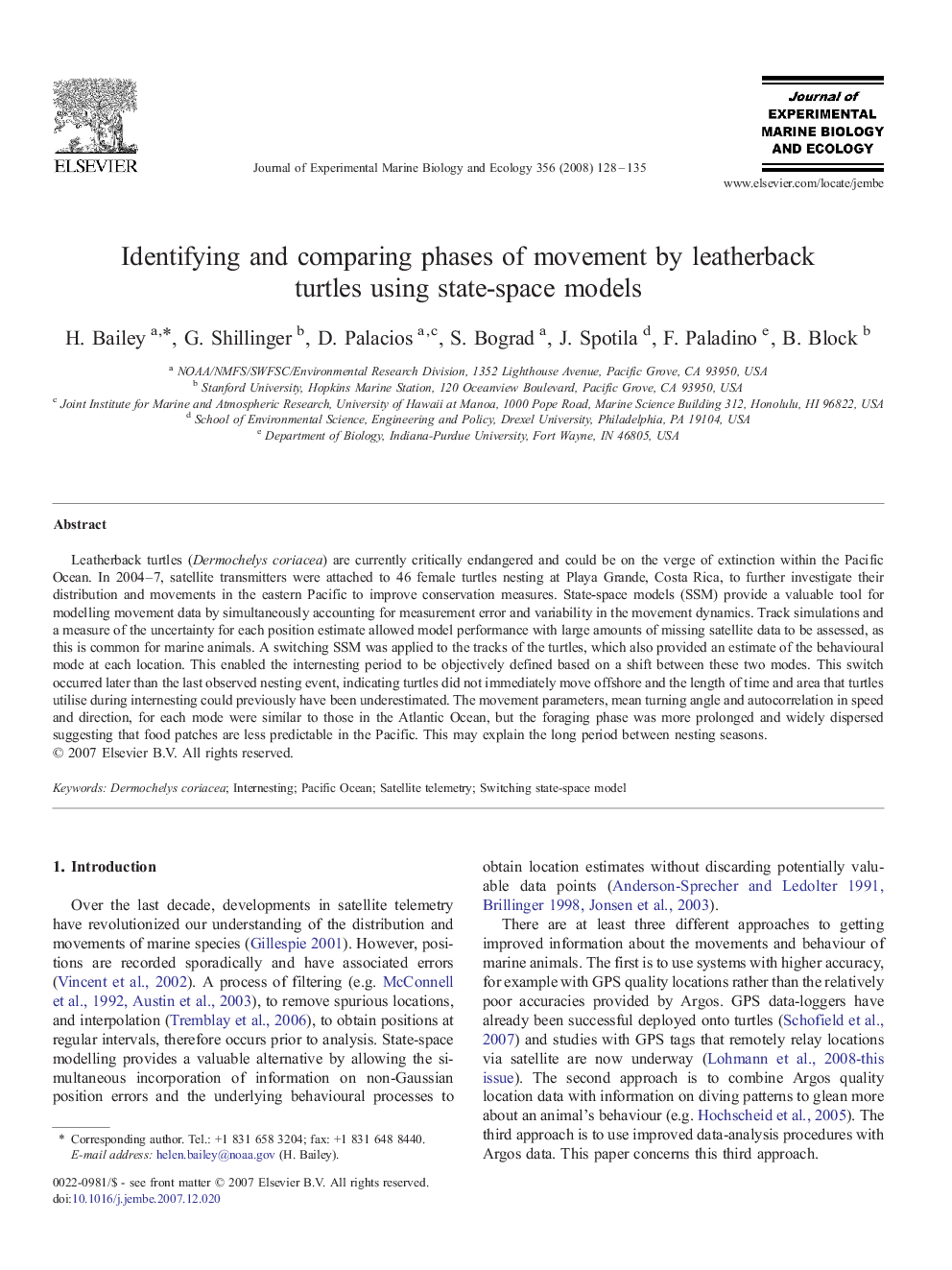| Article ID | Journal | Published Year | Pages | File Type |
|---|---|---|---|---|
| 4397476 | Journal of Experimental Marine Biology and Ecology | 2008 | 8 Pages |
Leatherback turtles (Dermochelys coriacea) are currently critically endangered and could be on the verge of extinction within the Pacific Ocean. In 2004–7, satellite transmitters were attached to 46 female turtles nesting at Playa Grande, Costa Rica, to further investigate their distribution and movements in the eastern Pacific to improve conservation measures. State-space models (SSM) provide a valuable tool for modelling movement data by simultaneously accounting for measurement error and variability in the movement dynamics. Track simulations and a measure of the uncertainty for each position estimate allowed model performance with large amounts of missing satellite data to be assessed, as this is common for marine animals. A switching SSM was applied to the tracks of the turtles, which also provided an estimate of the behavioural mode at each location. This enabled the internesting period to be objectively defined based on a shift between these two modes. This switch occurred later than the last observed nesting event, indicating turtles did not immediately move offshore and the length of time and area that turtles utilise during internesting could previously have been underestimated. The movement parameters, mean turning angle and autocorrelation in speed and direction, for each mode were similar to those in the Atlantic Ocean, but the foraging phase was more prolonged and widely dispersed suggesting that food patches are less predictable in the Pacific. This may explain the long period between nesting seasons.
